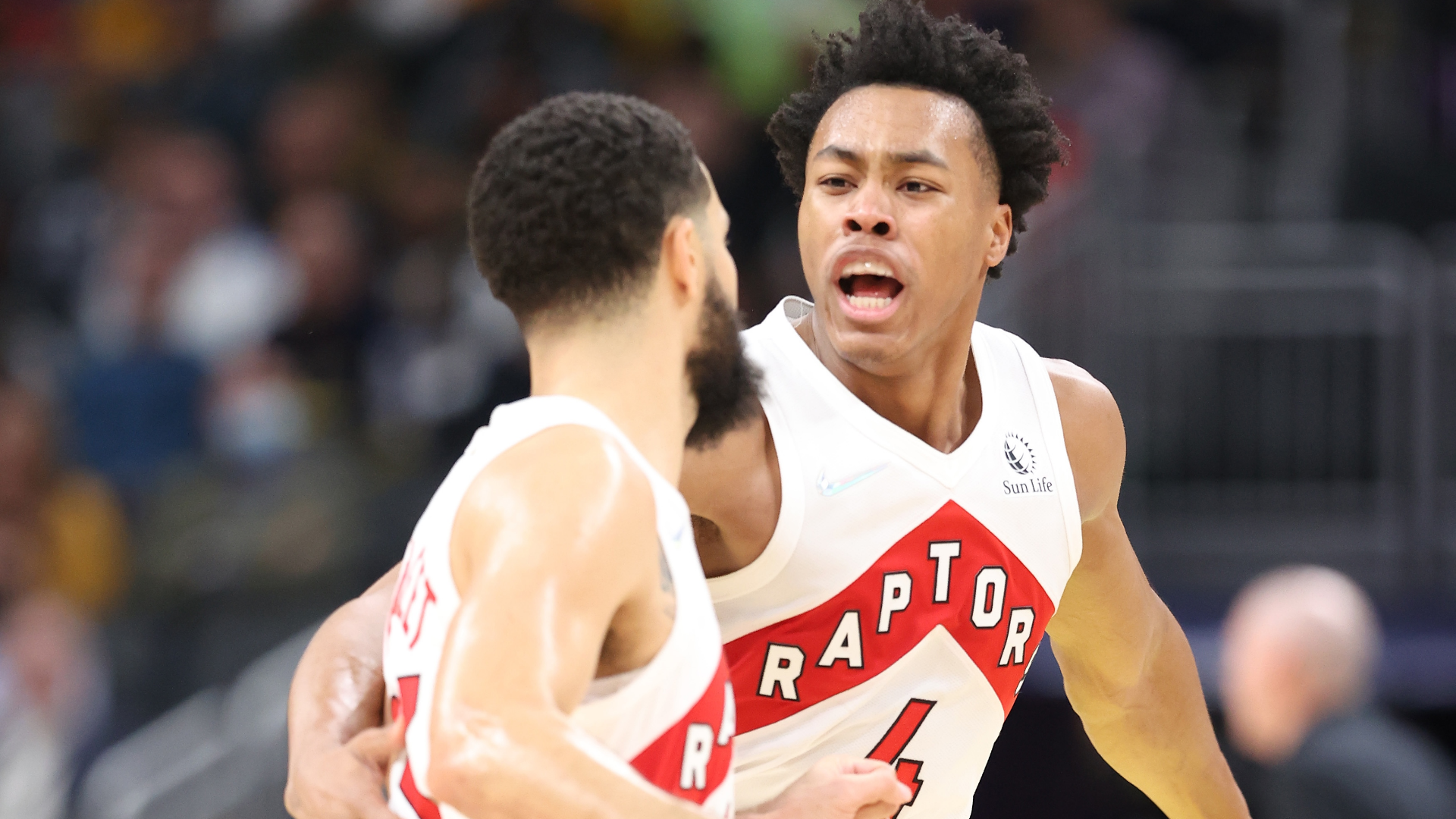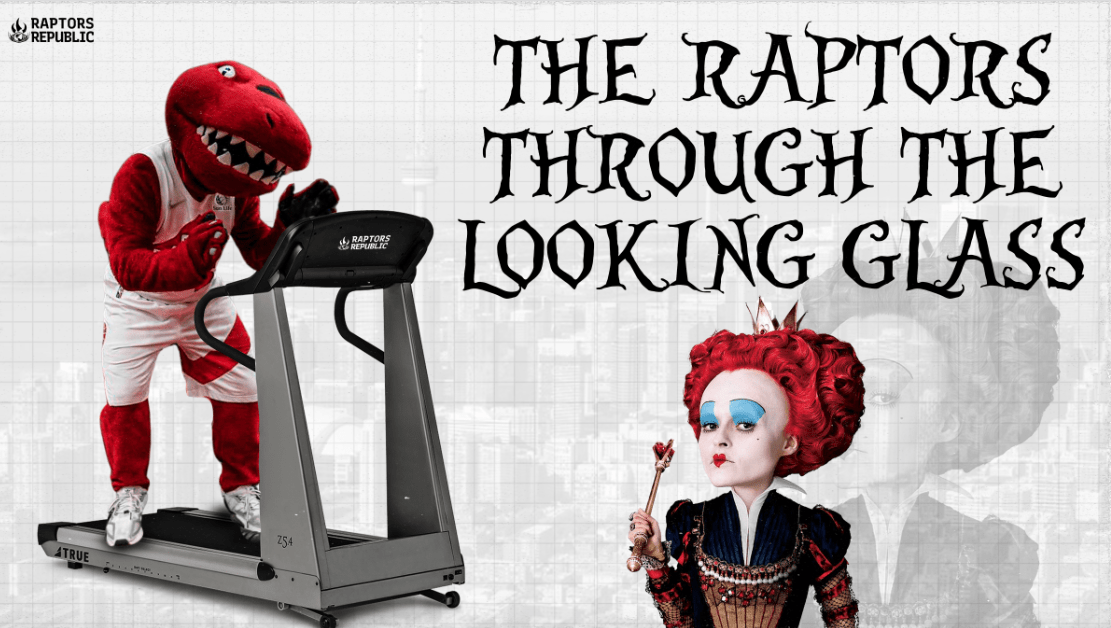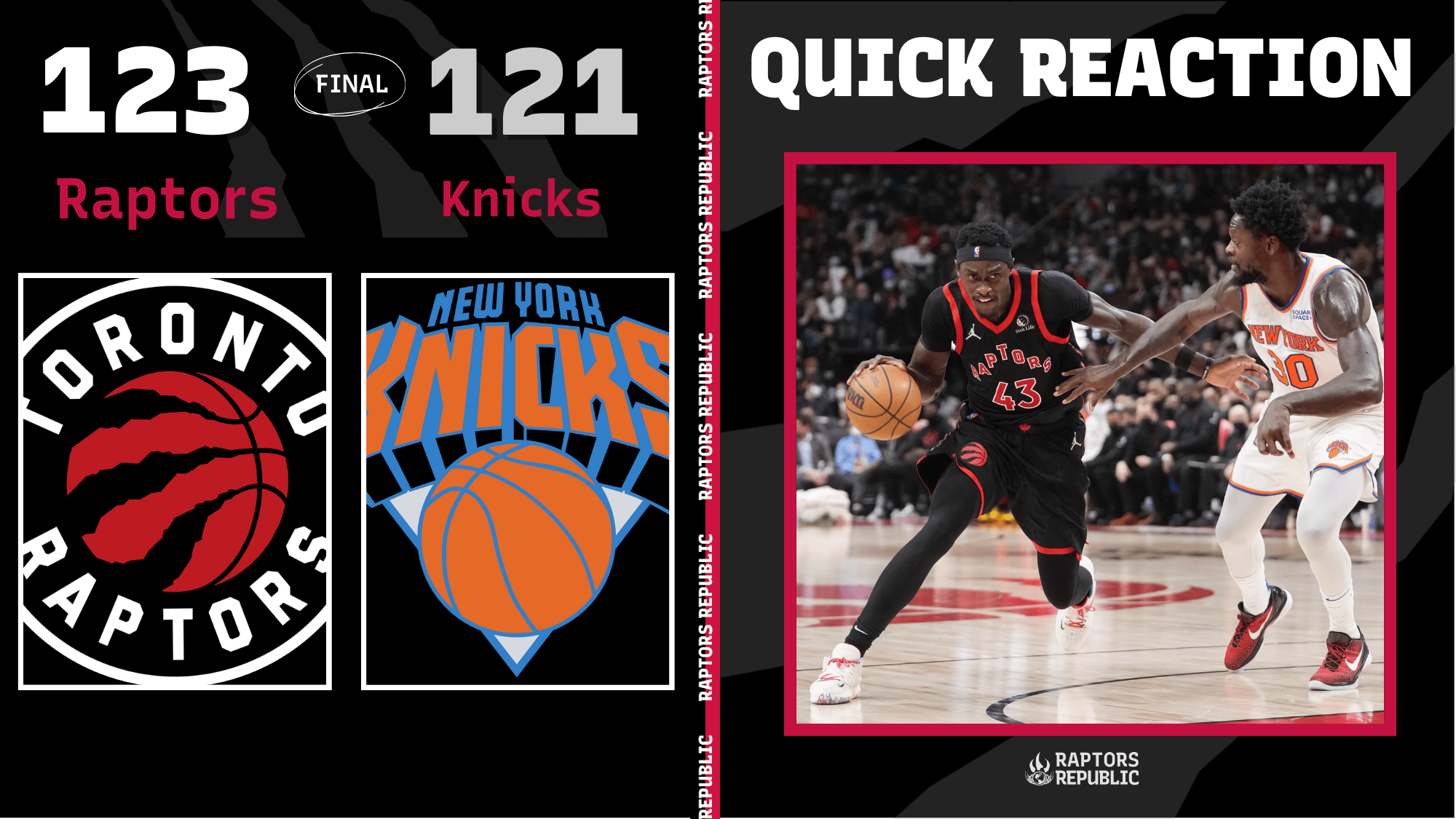On Jan. 4, Fred VanVleet tried to take on the Milwaukee Bucks almost single handed. For much of the game, he was the only Raptor with much of a pulse on the court, and he dragged the team to overtime and an eventual loss. He finished with 28 points, 12 assists, 8 rebounds, and 3 steals, and those numbers understate how important he was to Toronto’s chances. Only two nights later, he dropped 28 points again, with 8 rebounds, 7 assists, 2 steals, and a block — again in a loss.
There were plenty of commonalities between the two games, but arguably the two most important ones were the Raptors losing and VanVleet playing near his best. (Yes, he shot poorly on 3-pointers. That’s a major issue. Outside of that problem, he played about as well as he can.) He won his minutes in both games, but the Raptors were really only competitive at the very end, making last-gasp comebacks once the other team loosened up. VanVleet being at his best does not necessarily mean the Raptors are at theirs. In fact, increasingly this season, the two are somewhat in tension. (Some anecdotal evidence: VanVleet has two 39-point games this season, his two highest-scoring ones. Both were losses for Toronto.)
Following those game on Jan. 4 and 6, things changed for the Raptors. VanVleet has been significantly less effective, less involved, and less individually successful. Yet the Raptors have been a fair amount better.
How has that been possible?
Up to and including Jan. 6, VanVleet enjoyed the second-largest usage rate on the team. He was second in shot attempts per game and second in per-game scoring. Yes, not every component of his role has been the same as it was last year. But by and large, he sure was seeing plenty of the ball. For a team that is built, at least theoretically, on equal opportunity, VanVleet’s opportunity came at least to some extent at the cost of other would-be secondary scorers like O.G. Anunoby and Scottie Barnes. All of Toronto’s leaders have been at their best with the ball in their hands, VanVleet perhaps most of all, especially with his catch-and-shoot jumper missing.
The next game, things changed dramatically for VanVleet. Against the Portland Trail Blazers, VanVleet took only 12 shots. His minutes dwindled, as did his usage, but Toronto won his minutes on the court by 12 points and broke even when he sat. That pattern has mostly reproduced itself since then. VanVleet’s minutes and shots are shrinking. Not including those games ended early due to injury, VanVleet’s two games with the fewest field-goal attempts on the season both came since Jan. 6.
He’s bringing the ball up the court less often. His touches have dwindled. His rate of creating in pick and rolls has dropped by half. Instead of being involved more often in creating with the ball in his hands, he’s spending more time spacing the floor from the corners and more time cutting away from the ball.
When he has been taking shots, they’ve often been created by his work with the legs rather than with the ball. This was a specific play call to get VanVleet chaining a series of actions: setting a back screen, receiving a wide pin, and then transferring into a handoff for the open jumper.
It’s established, then, that VanVleet is doing less, particularly less dribbling and less with the ball in his hands. So then what, with those extra touches and dribbles, are the Raptors doing more of? That is more subtle.
Scottie Barnes has been doing significantly more, of course. He’s been used in a different role for some games, channeling his inner Domantas Sabonis. His usage has been practically identical since Jan. 7, but the means by which he’s achieving his usage has changed. He’s attempting fewer shots — and shooting much more efficiently on the ones he’s taking — and creating significantly more for teammates.
But there’s a crucial change to note: all the starters per-possession field-goal attempts are down. VanVleet’s have dropped by the largest amount, of course, but so too have Siakam’s, Gary Trent. jr.’s, Anunoby’s, and of course Barnes’. And remember: this is on a per-possession basis. The starters are of course playing fewer minutes. But they’re also doing less within the minutes they’re playing.
The bench has been doing significantly more. Christian Koloko is taking significantly more shots on a per-possession and total basis, and he’s also connecting on a decent rate of them — 53.3 percent. (That’s not ideal, considering he takes practically all his shots at the rim, but he remains the team’s plus-minus king, winning his minutes by absurd proportions, so it’s hard to quibble.) Chris Boucher is taking more shots. Precious Achiuwa is taking the most shots per 100 possessions on the team. He has been enormously aggressive, and the Raptors have been reaping the benefit — with his percentages back to fantastic rates from all areas of the floor during this four-game stretch.
Achiuwa has played some minutes alongside the erstwhile starters in place of Trent, and the Raptors have been dominant in those stretches. He was also part of Toronto’s gigantic lineup alongside Siakam, Boucher, Anunoby, and Barnes, and that group won its eight minutes by five solid points in a — you guessed it — failed comeback attempt. But on a play-to-play basis, Achiuwa can do some star-level stuff, running in transition, spotting up, cutting, or playing either spot in the pick and roll.
By and large, the bench has been great. There are plenty of reasons for that, including a return to health and consistency from Achiuwa, added opportunity and minutes, and the ability to face lesser competition.
At this point, it’s worth highlighting that last point as an important caveat. Toronto’s two close losses with VanVleet in the driver’s seat came against very good teams. And two of their wins came against arguably the worst team in basketball, the Charlotte Hornets. When they faced a real basketball team again, the Atlanta Hawks, they lost, despite the shift in hierarchical approach.
Yet they actually won the minutes with VanVleet on the bench by five points. He was closer to at his worst than at his best — missing his shots and giving up blowbys at the point of attack with regularity — yet the Raptors still should have survived. Why should they have survived? Because the Hawks took almost half their shots from the midrange, and they shot a ridiculous 21-of-41 from that range. An outrageous shooting performance, but you can’t argue with Toronto’s process.
There are a number of corollaries to Toronto’s new hierarchical approach. VanVleet may be at his best with the ball in his hands, but the Raptors are likely at their best with the ball elsewhere. VanVleet has long been an elite cutter and screener, and those skills are probably more important at the moment to the Raptors. He hasn’t been shooting better from the floor or from deep, but he’s taking fewer shots and is leading the team in assists. He has become a low-usage point guard, and it’s been working mostly well.
Siakam has also — outside of a poor showing against the Hawks — been exceptional. He has been more efficient during this four-game stretch than usual, with a ridiculous true-shooting percentage of 64.7. Much of that has been because he’s doing less heavy lifting. He’s had easy points created for him, cutting off the ball, hitting open catch-and-shoot triples, and being able to attack the offensive glass because he’s not the one shooting.
Barnes has been better than ever in a kind-of-new, flexible role. He’s been more of a hub, with Siakam and VanVleet doing less there, and he’s been more committed than ever to reaching the paint and using his size there to convert efficiently.
This new look for the Raptors probably won’t turn the season around. We saw against the Hawks –a good team, albeit not a great one — that even with good process, the Raptors just don’t have the shotmaking to hang with the best. The defense was solid. And the shots were fairly good. So at the very least, this new hierarchy can tell Toronto what changes should accomplish at the trade deadline.
Toronto needs more shot making. It needs more play finishers, more efficiency, more shooting, more drivers, more offensive weapons. Oh, and more rim protection, too. One or two players can accomplish all of that, but the team needs a lot. Significantly: even if VanVleet is no longer on the roster, someone needs to fulfill the role he’s shifted towards. The team needs a point guard, and though Siakam and Barnes have been good there in different ways, they have been at their best with someone else to create advantages that they can then convert. It’s clear that Achiuwa, Boucher, and Koloko have been effective off the bench, and they need to remain empowered.
The Raptors may not have solved their issues this season. But at the very least, they should now be able to see what a solution might look like.



